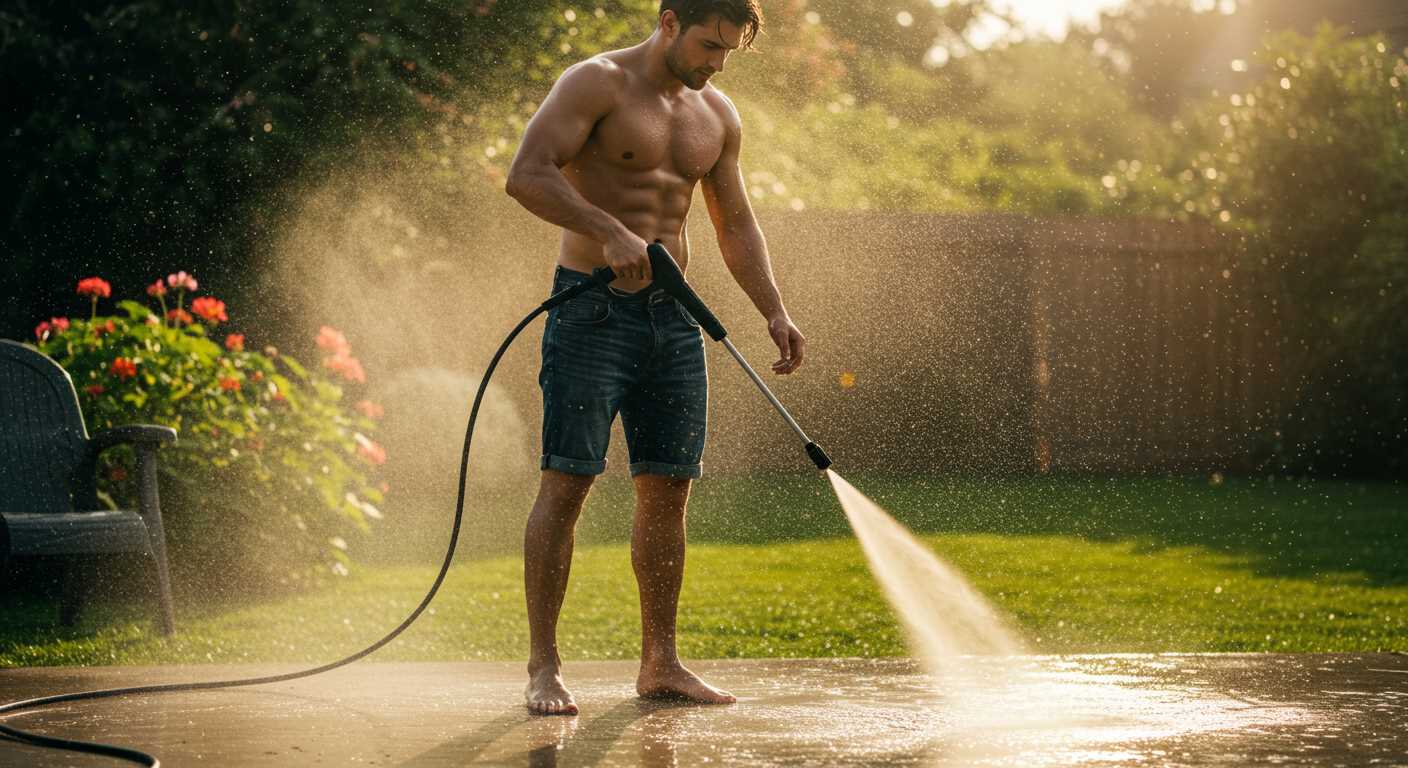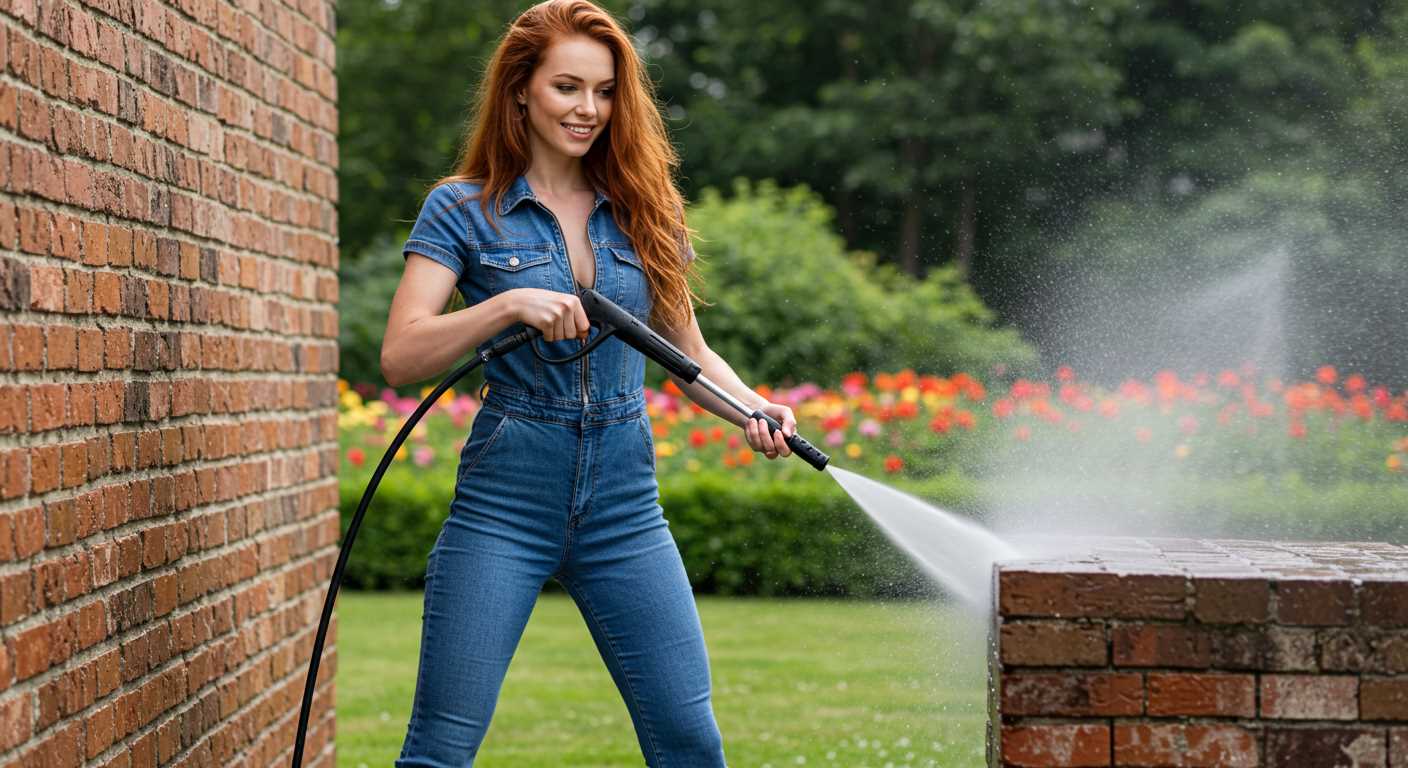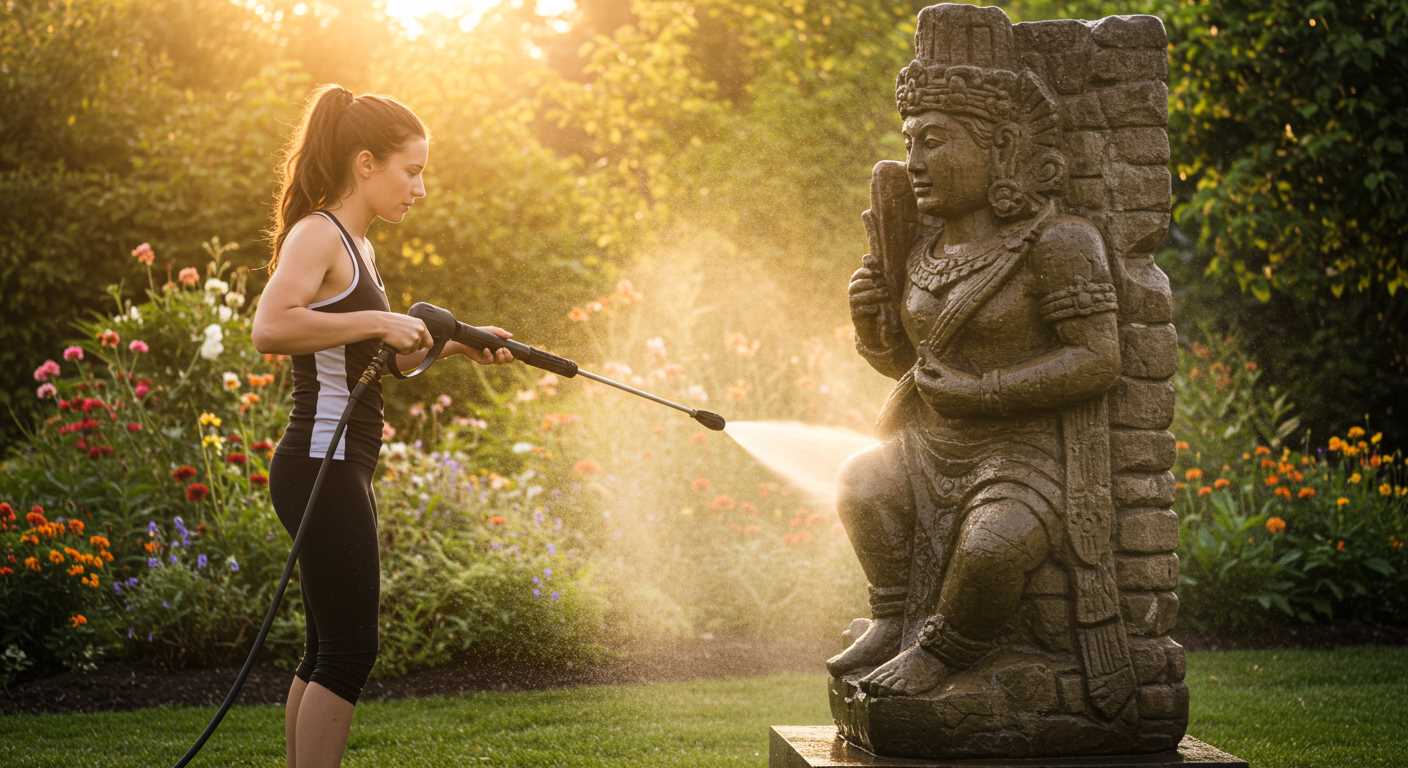

For optimal performance, ensure your equipment is positioned on a flat, stable surface before connecting the water supply. This initial setup will prevent leaks and vital damage during operation.
Connect the nozzle securely to the lance; the right attachment is crucial for achieving the desired spray pattern. A narrow jet is ideal for stubborn grime, while a wider spray covers larger surfaces efficiently.
Always fill the detergent tank with the appropriate cleaning solution, and run the machine briefly to mix it with water. This ensures an even distribution of the cleaner while operating, providing a better cleaning experience.
Adjust the pressure settings according to the surface you’re cleaning; lower pressure works well for delicate items like cars, while higher pressure is suitable for driveways and patios. Remember, testing a small area first can prevent any potential damage.
When finished, detach the lance and clean the interior of the machine according to manufacturer’s guidelines. This proactive maintenance extends the lifespan of your device and keeps it running smoothly for future tasks.
Choosing the Right Karcher Pressure Washer Model for Your Needs
For effective cleaning, I recommend selecting a unit based on its intended application. Consider models with varying pressure levels suited for tackling specific tasks:
- Compact Models: Ideal for light-duty jobs, such as cleaning bicycles, patios, or garden furniture. Look for up to 120 bar pressure.
- Mid-Range Options: Suitable for moderate tasks like car washing and deck cleaning. These usually feature pressures between 120 to 150 bar.
- Heavy-Duty Machines: Best for challenging surfaces and larger areas, like driveways and industrial cleaning. These can deliver pressures exceeding 150 bar.
Evaluate additional features that enhance usability:
- Accessories: Nozzles with adjustable spray patterns allow you to customise the cleaning experience based on the task.
- Wheels and Weight: Models with larger wheels make transportation easier, especially on uneven surfaces.
- Built-in Detergent Tanks: These provide convenience when applying cleaning solutions during operations.
Energy source is another dimension to consider:
- Electric Units: Quieter and more environmentally friendly, they suit residential areas with lighter cleaning demands.
- Petrol Options: More powerful and portable, ideal for professional use where electricity supply is limited.
Lastly, budget plays a key role. Determine the maximum price range you’re comfortable with while ensuring you select a model that meets your requirements. Keep an eye out for warranties and customer support to safeguard your investment.
Unboxing and inspecting your pressure cleaning equipment components
Upon receiving your new cleaning device, the process begins with careful unboxing. Follow these steps for an effective evaluation of components:
Inspection Checklist
.jpg)
Ensure a thorough inspection by following this checklist:
| Component | Status | Notes |
|---|---|---|
| Main unit | Check for dents or scratches | Ensure no damage from shipping |
| Hose | Inspect for kinks or tears | Look for any signs of wear |
| Nozzle attachments | Verify all types are included | Check for functional locking mechanism |
| Connectors | Ensure compatibility and integrity | Assess for any cracks or defects |
| Power cord | Inspect for frays or cuts | Test the length and flexibility |
| User manual | Confirm presence | Familiarise with safety information |
Functional Test

After confirming all components are intact, perform a brief functional test. Connect the unit to a water source, switch it on, and check for smooth operation. Listen for unusual sounds or leaks, as these could indicate underlying issues.
Completing these steps ensures readiness for optimal performance in any task, enhancing your cleaning experience. Enjoy the process, and remember, preventive checks can save time and hassle later on.
Step-by-step guide to assembling your karcher pressure washer
Begin by laying out all components from the packaging on a clean surface. Identify the main unit, handle, hose, spray gun, nozzles, and any additional parts included.
First, attach the handle to the base of the machine. Align it with the designated slots and secure it using the screws provided. Ensure everything is tightly fastened to avoid future issues.
Next, connect the high-pressure hose to the outlet on the machine. Push it into place until you hear a click, confirming a secure fit. Follow this by attaching the other end to the spray gun, ensuring it locks properly as well.
Proceed by installing the nozzle of your choice onto the spray gun. Depending on your cleaning needs, select either the standard nozzle or a special one, like a rotating or soap nozzle, if available. These can be easily swapped by twisting them into position.
After everything is connected, check for any visible leaks along the hose and connection points. This step is key to ensure safe operation.
Plug the unit into a power outlet and connect the water supply hose. Ensure the water source is clean and free of debris to prevent damage. Turn on the water supply before starting the machine.
Finally, consult the manual for any model-specific assembly instructions. Each unit may have unique features or requirements, so double-checking can save time and effort.
Connecting and priming your karcher pressure washer for first use

To connect your unit, follow these steps:
- Locate the water inlet on the machine’s frame.
- Attach a garden hose with a standard connector to the inlet. Ensure it fits snugly to prevent leaks.
- Turn on the water supply fully. Check for any leaks at the connection.
Priming is crucial for optimal operation:
- Before turning on, ensure the spray gun is securely attached to the lance.
- Once the garden hose is connected, open the spray gun trigger for a few seconds. This action releases any trapped air in the system.
- Keep the trigger pulled until a steady stream of water flows without air bubbles.
Power up the unit after priming. Check the pressure settings according to your task requirements for efficient cleaning.
If you encounter issues like low pressure:
- Inspect the hose for any kinks or clogs.
- Verify the water supply is adequate. Low flow will affect performance.
- Make sure all fittings are tight and secure.
By following these simple steps, your equipment will be ready for a variety of cleaning tasks with optimal performance.
Selecting the Appropriate Nozzle for Different Surfaces

The right nozzle is critical for achieving optimal results while maintaining safety for your surfaces. For flat surfaces like driveways or patios, I recommend a wide fan nozzle (typically 25 degrees). This nozzle provides an excellent balance of spray width and pressure, effectively removing dirt without damaging the surface. For tougher stains or more textured materials, such as concrete or stone, a narrower nozzle (15 degrees) delivers higher pressure, making it more suitable for deep cleaning.
For painted or softer surfaces, always use a 40-degree nozzle. This option disperses water over a larger area, preventing paint damage while still allowing for effective cleaning. When rinsing vehicles, I prefer a soap nozzle if available, as it helps apply cleaning agents evenly, ensuring thorough coverage before rinsing.
If you’re tackling wood surfaces, such as decking or fences, use a low-pressure nozzle. This nozzle minimises the risk of splintering or damaging the wood grain. Always test on a small, inconspicuous area first to confirm the appropriateness of the chosen nozzle.
Additionally, consider the environment. For delicate plants or flower beds, keep a safe distance while using the 40-degree nozzle, or use a lower pressure setting to protect them from unintentional damage. Switching nozzles is straightforward, which allows for quick adjustments according to the surface being cleaned.
In summary, match the nozzle to your surface type for the best results: wide fan nozzles for general cleaning, narrow ones for tough stains, and gentle nozzles for softer materials. Always prioritise safety and effectiveness.
Maintenance Tips to Prolong the Life of Your Pressure Cleaner
Regularly inspect and clean the filter to prevent blockages. A clogged filter can cause overheating and reduced performance.
Winter Storage Precautions
Before storing during colder months, drain all water from the unit and run a antifreeze through the system to avoid damage from freezing temperatures.
Use Quality Detergents
When using cleaning agents, opt for products specifically designed for your device. This helps to avoid chemical reactions that could harm internal components.
Periodic internal inspections will assist in spotting wear and tear early. Regularly check hoses and connections for leaks or cracks, and replace any worn parts to ensure optimal operation.
Keep the exterior clean to prevent rust and corrosion. Wipe down surfaces after each session to remove dirt and grime that can degrade paint and seals over time.
Store your cleaner in a dry place away from direct sunlight. This prevents material degradation caused by UV exposure and prolongs the lifespan of rubber components.








